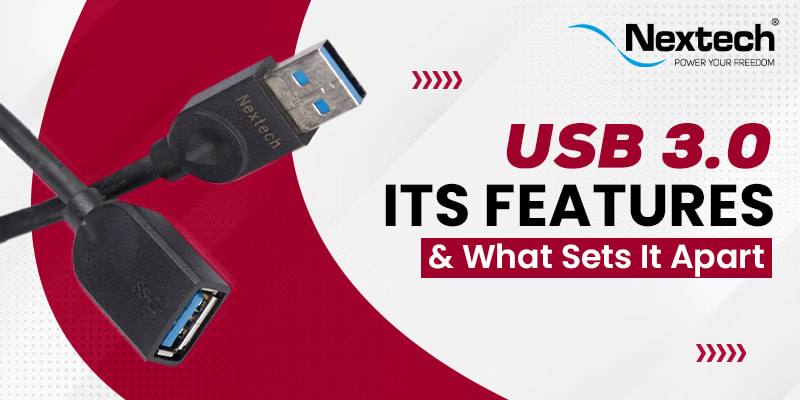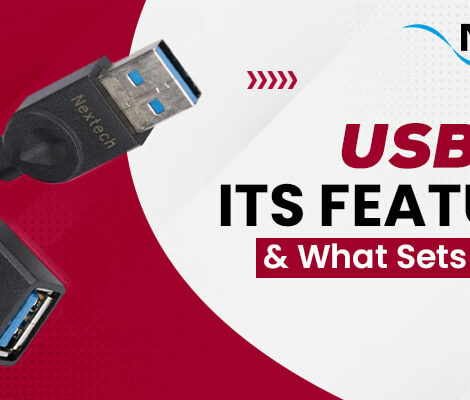USB 3.0: Its Features & What Sets It Apart
USB has primarily been designed with the goal of replacing multiple connectors with a single one. Universal Serial Bus, commonly known as USB, has become one of the most widely used interfaces in modern times. It offers a wide range of features, including substantial storage capacities and high-speed file transfer capabilities. There are several USB series available, with the latest being USB 3.0, designed to enhance flexibility, adaptability, and consumer usability. If you’re contemplating to buy a USB 3.0 high-speed cable, let’s explore what USB 3.0 encompasses, its notable features, and how it distinguishes itself from other interface options.
What is USB 3.0?
USB 3.0, named SuperSpeed USB, is the third iteration of the Universal Serial Bus specification. It has a maximum data transmission rate of 5 Gigabits per second (Gbps). As a result, it is ten times faster than its predecessor, the USB 2.0. The best thing about this version is that it is compatible with the most older and modern device models, such as tablets, smartphones, laptops, and many more.
USB 3.0 Features
Apart from the high-speed data transfer and fast charging capabilities, the features of USB 3.0 are vast. Some of them are outlined below, which shows what has made it an indispensable technology for today’s needs.
- Dual-Bus Architecture: USB 3.0 uses two separate data paths – one for sending data and one for receiving it. The increased data flow from this bidirectional communication makes connections speedier and more dependable.
- Increased Bandwidth for Efficient Data Transfer: Whether you want to buy a USB 3.0 male-to-female cable or a high-speed cable, remember USB 3.0 offers a substantial increase in bandwidth compared to its predecessors. This high bandwidth allows for the seamless transfer of large data files between devices.
- Improved Power Management: USB 3.0 introduces advanced power management features that optimise energy consumption. This means that devices can intelligently enter low-power states when not in active use, conserving battery life and reducing overall power consumption.
- Enhanced Multitasking: USB 3.0’s improved bandwidth and data transfer speeds make it suitable for multitasking. You can connect multiple peripherals and external storage devices simultaneously without experiencing a significant drop in performance.
How is USB 3.0 different from its predecessors?
Till now, you must have understood the latest features of USB 3.0. But the major question that comes to mind is what sets it apart from its predecessor. Well, to be honest, none of the USB 3.0 advancements occurred in one night; they required significant effort and development to meet the demands of our modern world. Manufacturers have consistently strived to enhance interconnectivity and charging capabilities as technology evolves, ensuring that future interfaces will be even more efficient and user-friendly.
USB 3.0 stands out from its predecessors due to its groundbreaking speed, flexibility, multidirectional data transfer, and robust physical durability. This USB version has increased data transfer and charging capacity by roughly tenfold, going from 1.5 Mbit per second to 5 Gbit per second. These improvements were driven by industry demands and technological advancements over time, emphasising the need for faster and more efficient device connectivity.
Suggested Reads: TECH GUIDE: TYPES OF DISPLAY CABLES
Summing Up
In a nutshell, USB 3.0 has revolutionised the world of device connectivity and data transfer. Whether you’re a working professional or a casual user looking to purchase a USB 3.0 male-to-female cable, visit Nextech by Amson for high-quality products. We are a prominent manufacturer and supplier of Display Cables, AV Connectivity, Portable chargers, and Cables. If you want to embrace the latest technology for seamless connectivity and data transfer, we’ve got you covered. Connect with us today; we’re just one click away.


